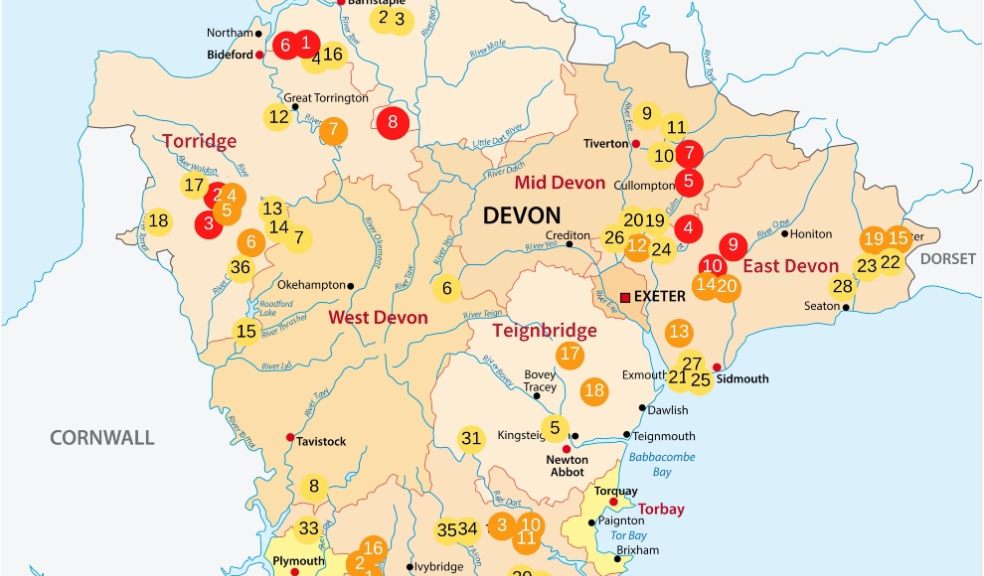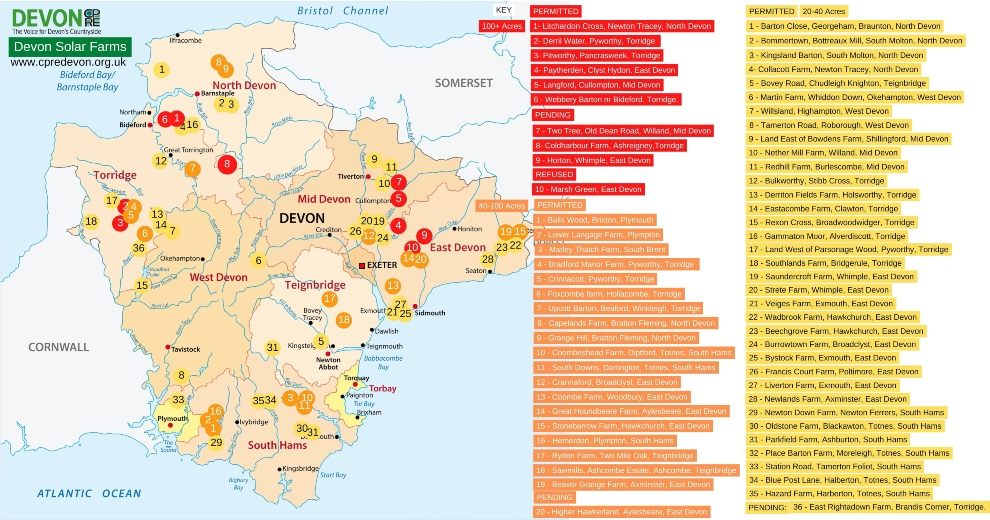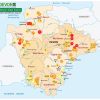
Devon CPRE releases new map showing alarming solar farm spread
As applications for massive new solar farms on prime agricultural land continue to come thick and fast, the Devon branch of the countryside charity CPRE has released a map showing the alarming spread of industrial-sized solar developments across the county.
The map shows the number, scale and spread of 65 permitted and pending solar farms of 20+ acres in Devon, and the only major application to be refused last December at Marsh Green in East Devon. The nine largest solar farms covering 100+ acres are all within the local authority areas of Torridge, North Devon, Mid Devon and East Devon.
Barely a week goes by without one local authority or another in the county considering a solar farm proposal. Next week (Tuesday 28 March) plans for one covering 145 acres of farmland at Whimple in East Devon are being recommended for approval, despite many concerns from the local community. Devon CPRE’s objections are among the dozens so far received against Aura Power’s proposals for land east of Rutton Farm, Rull Land. Among numerous objections submitted to East Devon District Council, Devon CPRE states that 94.6% of the proposed site is graded 3a or 3b land, thereby including Best and Most Versatile (BMV) land, which should be protected for food production.
Meanwhile, construction of the massive Litchardon Cross solar farm is underway in North Devon, and Torridge has recently received an application for a solar farm and related battery storage on fields at Brandis Corner, near Holsworthy. The developer wants to install 11,600 solar panels, eleven industrial containers with batteries, three sub-stations and other infrastructure. Devon CPRE has objected to the Torridge proposal because of its size and location in the open countryside. The charity believes this would adversely impact the environment for the proposed 40-year lifetime of the solar farm and unjustifiably industrialise a greenfield site when there’s a growing need for our agricultural land to be put to better use producing food.
Devon CPRE Director Penny Mills says, “Solar power has a part to play in providing so-called renewable energy but, in a wet climate like Devon’s, covering thousands of acres of productive pasture with glass is not the ‘green’ solution it’s claimed to be - especially when there are plenty of redundant brownfield sites and rooftops where the panels could be put.”
Devon CPRE trustee and energy spokesperson Dr Phillip Bratby adds, “At a time of rapidly rising food prices, we believe that Devon's farmland should not be covered in solar panels to produce small quantities of expensive electricity at times of the day when it is least needed, but should instead be used to produce high-quality food for local consumers.”
The publication of Devon CPRE’s solar farm map comes as the national charity CPRE launches its own campaign for solar to be located on rooftops, something the Devon branch has long campaigned for. Regrettably, these arguments often fall on deaf ears because solar farm developers have deeper pockets than our charity to promote their agenda and interests and claim that covering our fields in glass panels and batteries will solve the energy crisis. It won’t.
Click on the image below to zoom in.














